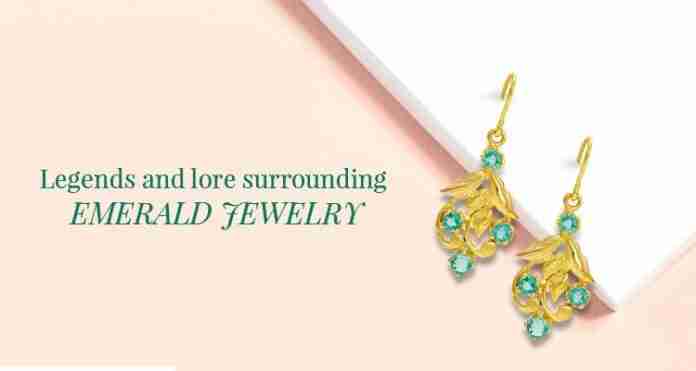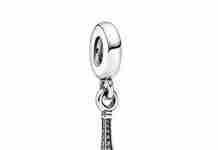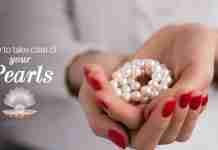The lush green hue of emerald has soothed and excited people for centuries.
The term emerald comes from the ancient Greek word smaragdus which means green gem.
The green color of emeralds has always had a place in mythology.
Ancient Egyptians and Greeks, in particular, gave great importance to the striking green rock and believed it soothed eyes, and your vision could be restored when
Review contents
Cleopatra’s Gemstone
The list of celebrated royalty who conspicuously displayed this green gem includes no less a figure than Cleopatra.
Indeed, she may have done a great deal to popularize that connection. The ancients considered these gemstones’ sacred symbols of fertility and immortality.
Reportedly, Cleopatra adorned herself and her palace with emeralds and also gave them as gifts to foreign dignitaries.
Most likely, she intended this as a display of wealth and power.
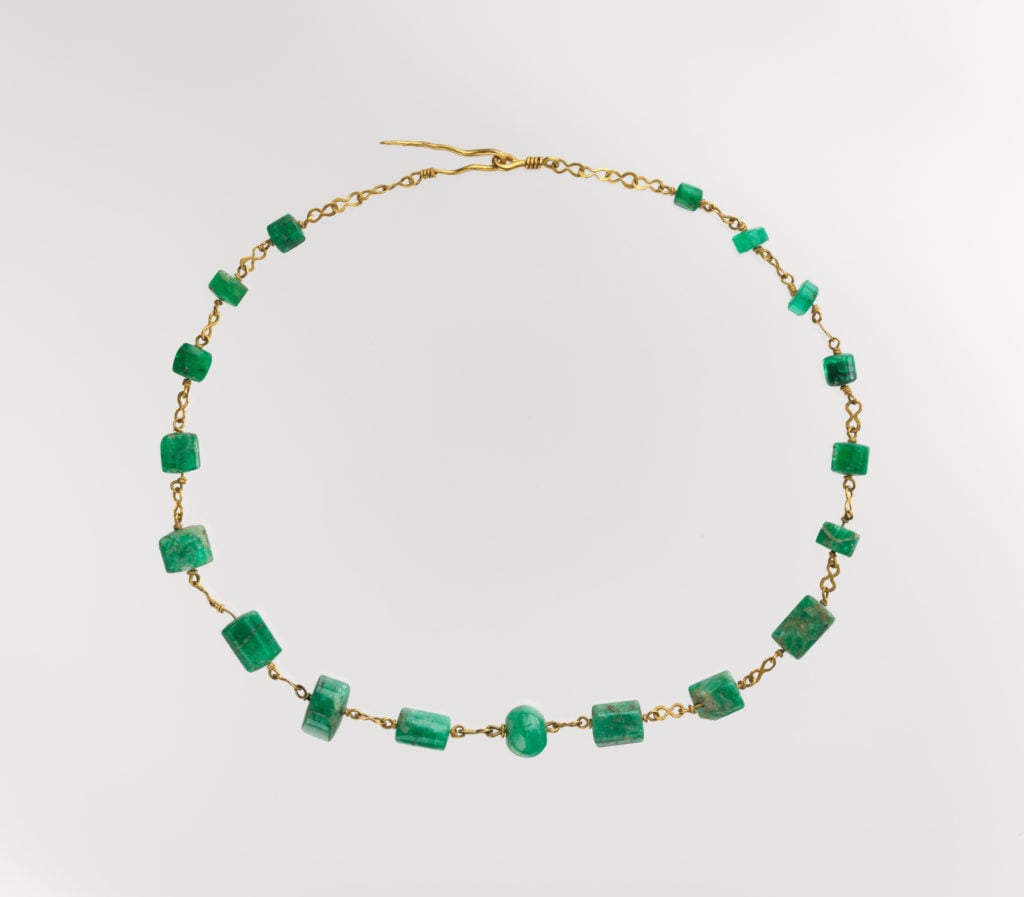
Imperial Roman gold and emerald necklace, 1st-2nd century CE, 33.5 cm. Funds from various donors, 1921. Metropolitan Museum of Art. Public Domain.
Emeralds as Mystical Talismans
People believed emeralds could confer riches, power, and eloquence if worn as talismans. Purportedly, these gems also strengthened memory and sharpened wits. Its most valuable power was perhaps bestowing the ability to predict future events.
In past eras, Arab, Hindu, and Spanish physicians used emeralds against poison, infection, and dysentery. Many people believed the gemstone could also protect against possession by demons.
A Gemstone for Lovers and Gem Cutters
A revealer of truths, emerald reputedly could cut through all illusions and spells, including the truth or falsity of a lover’s oath.
Some believed it could also dampen lust. (Perhaps emeralds could clear the head enough to see the truth about objects of infatuation).
Emerald’s soothing green color was thought to be restful to eyes under strain.
However, this strain didn’t only result from examining objects of infatuation.
Many gem cutters used to keep emeralds on their workbenches. They would rest their eyes on them after long hours of close work on other gems.
Mysterious Cities and Emerald Symbolism
Many ancient tales about India tell of mysterious and legendary cities of fabulous wealth, with walls or entire temples made of emeralds and other precious materials.
Images of abundant plants with leaves dripping emeralds and rubies suggested those lucky and virtuous enough to locate these cities would find heavenly jewels as their reward.
Stories like this spread across Europe. Of course, when the Spaniards arrived in the New World and discovered abundant emeralds and gold, they likely believed they had indeed found the treasure cities of legend.
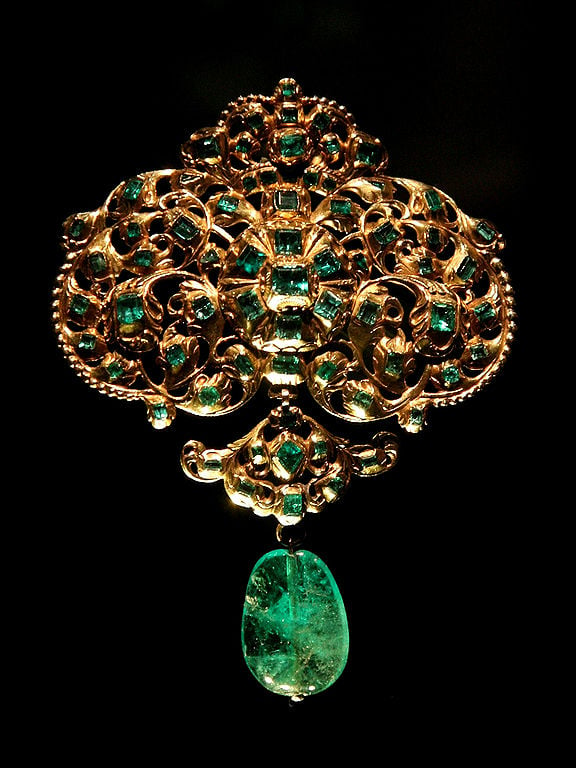
Spanish pendant, table-cut emeralds set in gold and hung with a Colombian emerald drop, from the collection of the Victoria and Albert Museum, London, UK. Photo by Jinho Jung. Licensed under CC By-SA 3.0.
Emerald Symbolism and Offerings to the Gods
Hindus believe that those offering emeralds to the god Krishna will be rewarded. Since “givers are high in Heaven,” they will receive “Knowledge of the Soul and the Eternal.” The gods richly reward such generous giving. Hindu teachings also associate emerald with the planet Mercury, such as in the traditional “nine-gem” Navaratna jewel setting.
Western traditions connect emeralds more frequently with the planet Venus. Perhaps the story from Greek and Roman mythology of Venus emerging from the sea makes a difference here. For followers of Western astrology, the “sea green” color of emerald may make a better match with the goddess’s namesake planet.
Other peoples offer precious gems to their gods, too. In the 16th century CE, the Spanish historian Francisco López de Gómara wrote about the natives of northern South America. He notes they “burned gold and emeralds” before images of the Sun and Moon, their highest divinities.
If it’s precious to us, more so to our gods, no?
The Goddess Umina and Her Daughters
Around the time of the Spanish conquest, the people of the Peruvian city of Manta worshipped an emerald the size of an ostrich egg. This goddess was named Umina. Her priests brought her out of her temple only on her feast days. According to them, her followers should worship “the mother emerald” by bringing her “daughters,” smaller emeralds, to her. When the Spaniards conquered the town, they seized the immense store of emeralds. However, they never found the carefully hidden Umina. The conquistadors smashed many of these gems on an anvil to determine if they were real, mistakenly believing true emeralds could withstand this test.
In gemological terms, emeralds can have a very high hardness of up to 8. However, they’re more brittle than other members of the beryl family due to their many inclusions. (For the record, even diamonds with a hardness of 10 would shatter if hammered on an anvil). Hardness only measures resistance to scratching. Emerald jewelry still requires gentle treatment.
Emeralds and the Breastplate of Aaron
Scholars continue to debate whether the breastplate of Aaron, as described in Exodus in the Old Testament, included emerald, since revisions to the text have changed the names and orderings of these stones. In addition, over the years, gemstone names have changed. Some ancient sources also applied names to gemstones much more broadly than modern gemologists. For example, the ancients used the Latin name sapphirus to mean any blue gem. This could even include such stones as lapis lazuli and not just the corundum gems we call sapphire today.
Suffice to say, the breastplate included a green stone called smaragados in Ancient Greek. However, whether that meant true emerald, green feldspar, or some other green stone is difficult to say. Since emerald mines operated in Nubia, near Egypt, before the era of the breastplate’s supposed construction, it could have included emeralds.
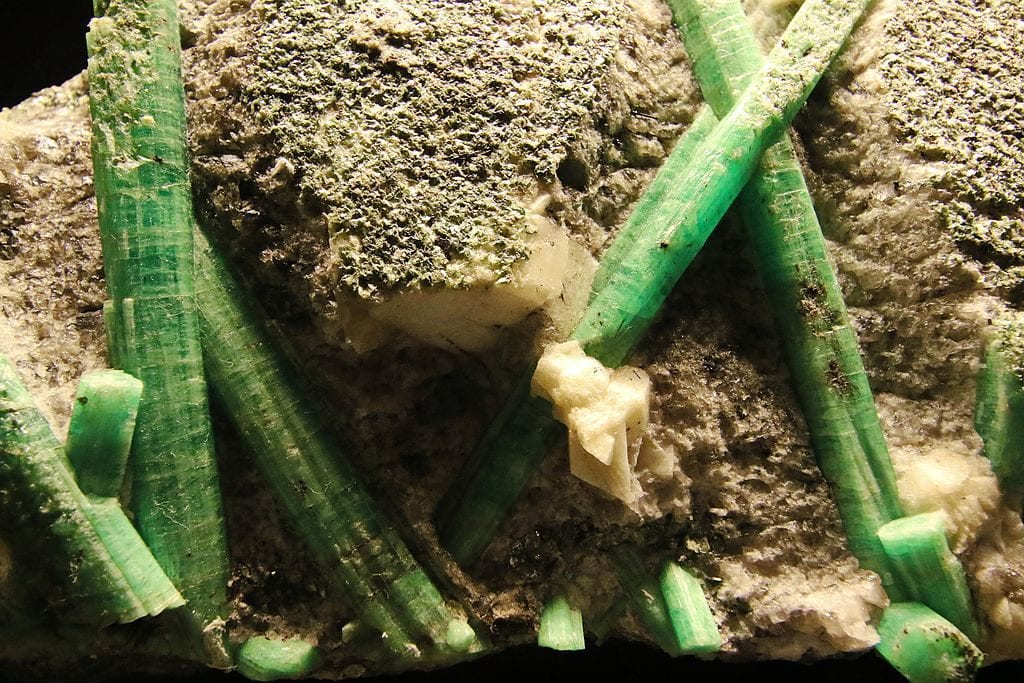
Although the identity of the ancient gem known as smaragados remains uncertain, its legacy lives on. Many languages have names for emerald based on this word. For example, smaragd means “emerald” in German, Czech, Swedish, and many other European languages. Emerald on quartz from China, specimen from the TU Bergakademie Freiberg mineral exhibition, Germany. Photo by Kora27. Licensed under CC By-SA 4.0.
The Foundation Stones and Emerald Symbolism
Emeralds also appear among the foundation stones of the Heavenly City in the New Testament Book of Revelation. The Archbishop Rabanus Maurus of Mainz (786-856 CE) wrote about the significance of the twelve Apocalyptic gems. “In the emerald is expressed the strength of faith in adversity,” he said.
These stones were frequently connected to the twelve apostles. Andreas, bishop of Caesarea (563-637 CE), had this to say of the emerald:
The emerald, which is of a green color, is nourished with oil, that its transparency and beauty may not change; we conceive this stone to signify John the Evangelist. He, indeed, soothed the souls dejected by sin with a divine oil, and by the grace of his excellent doctrine lends constant strength to our faith.
Some later writers rejected the assignment of the foundation stones to the apostles. Holding that only Christ could be regarded as the foundation of His Church, some associated the transparent green emerald with the kindness and goodness of Christ.
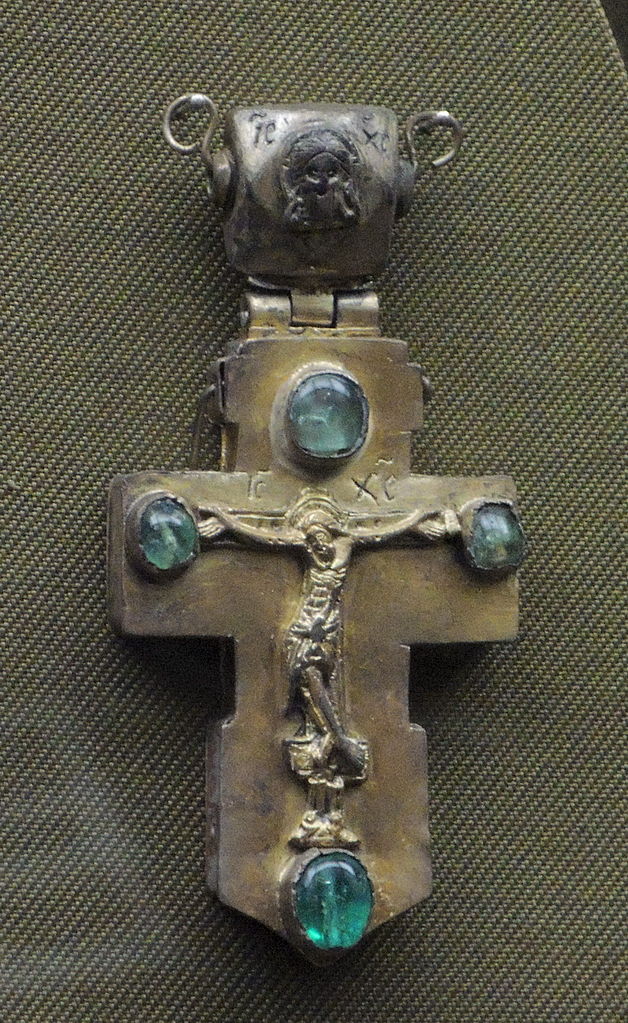
Cross-reliquary, silver and emeralds, 16-17th centuries CE, from the collection of the Tretyakov Gallery, Moscow. Photo: Wikipedia/Shakko. Licensed under CC By-SA 3.0.


